

How Newly Qualified Nurse Practitioners can Regulate Work-Life Balance

What Are The Benefits Of Retail Virtual Merchandising?

How to Achieve an Organic Link-Building Presence
What’s the difference between fifo and dido.

Two unique features of the labour model in Australia—introduced in the 1980s with the surge of the fuel, mining, mechanical, and geological sectors—are the FIFO job and the DIDO job. FIFO stands for “fly-in, fly-out” while DIDO stands for “drive-in, drive-out.” But both pertain to long-distance, often short-term engagements at a remote working site (such as a mine or faraway factory) that follow a “swing” interval of two weeks on shift, and one week back at home with family.
Over the years, both FIFO and DIDO options have broadened in terms of opportunities available, amenities provided, and working conditions followed. But if you are part of the skilled labour sector and are choosing between DIDO and FIFO jobs in Australia , you may need to weigh the consequences.
Here’s a short treatise on the differences between FIFO and DIDO, what would make one type of engagement preferable over the other—and some important tips to make it all work out for your health, wellbeing, career, and family life.
FIFO vs. DIDO: A Question of Travel Time, Distance, and More
The most obvious difference between FIFO and DIDO are the modes of travel listed in their nomenclature. These also determine the distance between the worker’s point of origin and their work site, how much time is typically spent at home versus at work, and how much monetary compensation they can glean from the engagement.
FIFO workers travel by plane to their work site, and the sheer distance away from home requires them to set down nearby for the work shift of their swing. Luckily, in many cases, the contractor provides FIFO workers with accommodation and regular meals. Many townships near such work sites have also evolved into “FIFO towns” of their own accord, and entire communities now exist to supplement FIFO workers with the healthcare, recreation, and amenities they need while they’re on shift.
On the other hand, DIDO jobs entail site work that may be within driving distance to a worker’s home. To get to the site, a DIDO worker must either drive or commute on their own. This everyday commute is a point of contention for many swing workers. Some may find the routine to be tiring, repetitive, and cumbersome; the energy spent commuting might be better allotted to resting before doing one’s assigned work. But on the flip side, DIDO workers may feel reassured that home is at least a little more accessible in case of emergency.
Monetary compensation may also factor into the decision. Though it depends on the industry, position, and level of experience, most FIFO jobs pay more than DIDO jobs, and the competition is stiffer with regard to FIFO openings. Contractors make up for the time a FIFO worker spends away from home with lodging, services, and concentration on FIFO workers’ needs. But of course, there are tradeoffs to this seemingly comfortable and focused routine—including overlooked threats to one’s mental and emotional wellbeing.
Fly-In or Drive-In, Are You Ready for the Challenge?
Whether you choose long-distance swing work on a FIFO basis or on a DIDO basis, there are some things you need to keep in perspective. The type of engagement you choose has both its pros and its cons, and what might work for one family situation may cause strain on another.
Don’t discount the effect that a FIFO or DIDO job might have on your health. Long drives, extended hours on site, and the temptation to binge-eat or drink a lot of alcohol may take a toll on your physical strength, your immunity to sickness, and your sleeping patterns. You may want to weigh the decision to go FIFO or DIDO with your doctor; obtain clearance from them before you say yes to either engagement.
In addition, be committed to staying in touch with your partner and/or your children, because the time away from them could affect your relationships. Both FIFO and DIDO workers are susceptible to experiences of loneliness, homesickness, burnout, or “fear of missing out” (FOMO). Whatever arrangement you choose, think about how such a decision factors into the betterment of your personal and social life.
Conclusion: Deciding What’s Best for YOU
The best ways to ensure that a FIFO or a DIDO engagement will turn out favourable for you are:
- Recognising what kind of travel is feasible for you and your family;
- Settling on the kind of work you want to do, and for which industry;
- Making the best of your chosen work schedule, and;
- Maintaining a balance between your career, your personal life, and your home life.
The FIFO and DIDO sectors are both changing for the better. Many companies have geared their efforts toward specialised HR measures for FIFOs and DIDOs, have campaigned for mental health and against alcoholism, and have instituted policies that are supportive to Australian families. Suffice to say, it is a good time to explore FIFO or DIDO—and to find fulfilling career opportunities outside one’s zone of comfort.
ROBOTS SUBSCRIPTION

Privacy Overview

What is FIFO, DIDO, & BIBO?
Mining companies transport workers to the mine site using various methods, depending on the location of the mine, workforce preferences, and logistical considerations.
Transporting workers to mining sites is a critical aspect of maintaining a skilled and productive workforce. Mining companies continually assess and refine their transportation strategies to ensure safe, cost-effective, and reliable movement of workers, promoting both the well-being of employees and the successful operation of the mine.
The choice of transportation method depends on the specific needs and circumstances of each mining operation. In this article, we will explore the three most common transportation methods used by mining companies: FIFO (Fly-In, Fly-Out), BIBO (Bus-In, Bus-Out), and DIDO (Drive-In, Drive-Out).
Fly in Fly out (FIFO)
A FIFO worker will fly to a job site to work, depending on the length of their roster ( more commonly known as ‘swing.’) The swing could be anything from one to three weeks and then the employee will fly home.
Rosters vary, depending on the companies arrangement, with their employee. It is cheaper for the employer to fly an employee to the site for the length of their roster as opposed to permanently relocating the employee and their family.
Drive in Drive out (DIDO)
DIDO workers drive themselves to the mine site and stay onsite for the duration of their roster. Some D.I.D.O workers report that the long distances they are forced to drive at the end of an extended night shift can cause them to fall asleep at the wheel. Research has shown that D.I.D.O workers with extended rosters and longer shifts are more likely to suffer from burn out and subsequently ceasing employment. DIDO and Fatigue
Bus in Bus out (BIBO)
BIBO stands for “Bus-In, Bus-Out.” BIBO workers will be collected from the airport or a specific location and taken to the camp by bus. They will then be transported back by bus once their work shift is complete.
Click here for a full list of mining industry acronyms, slang and other lingo you need to know!
Residential
Some mine sites are located in regional areas, and the company hire from the local communities. You will need to relocate or be living in the local area. Some sites will provide daily transport to and from the mine.
- Atlam Group © 2024
- [email protected]
- (08) 9314 7182
What’s the Difference between FIFO and DIDO?

Two unique features of the mining operations model in Australia—introduced in the 1980s with the surge of the fuel, mining, mechanical, and geological sectors—are the FIFO job Australia structure and the DIDO job structure. FIFO stands for “fly-in, fly-out” while DIDO stands for “drive-in, drive-out.” But both pertain to long-distance, often short-term engagements at a remote working site (such as a mine or faraway factory) that follow a “swing” interval of two weeks on shift, and one week back at home with family.
Over the years, both FIFO and DIDO options have broadened in terms of opportunities available, amenities provided, and working conditions followed. But if you are part of the skilled labour sector and are choosing between DIDO and FIFO jobs in Australia , you may need to weigh the consequences.
Here’s a short treatise on the differences between FIFO and DIDO, what would make one type of engagement preferable over the other—and some important tips to make it all work out for your health, wellbeing, career, and family life.
FIFO vs. DIDO: A Question of Travel Time, Distance, and More
The most obvious difference between FIFO and DIDO are the modes of travel listed in their nomenclature. These also determine the distance between the worker’s point of origin and their work site, how much time is typically spent at home versus at work, and how much monetary compensation they can glean from the engagement.
FIFO workers travel by plane to their work site, and the sheer distance away from home requires them to set down nearby for the work shift of their swing. Luckily, in many cases, the contractor provides FIFO workers with accommodation and regular meals. Many townships near such work sites have also evolved into “FIFO towns” of their own accord, and entire communities now exist to supplement FIFO workers with the healthcare, recreation, and amenities they need while they’re on shift.
On the other hand, DIDO jobs entail site work that may be within driving distance to a worker’s home. To get to the site, a DIDO worker must either drive or commute on their own. This everyday commute is a point of contention for many swing workers. Some may find the routine to be tiring, repetitive, and cumbersome; the energy spent commuting might be better allotted to resting before doing one’s assigned work. But on the flip side, DIDO workers may feel reassured that home is at least a little more accessible in case of emergency. It’s also a great option for those who aren’t too fond of frequently flying.
Monetary compensation or salary sacrifice packages may also factor into the decision. Though it depends on the industry, position, and level of experience, most FIFO jobs pay more than DIDO jobs, and the competition is stiffer with regard to FIFO openings. Contractors make up for the time a FIFO worker spends away from home with lodging, services, and concentration on FIFO workers’ needs. But of course, there are tradeoffs to this seemingly comfortable and focused routine—including potentially overlooked impacts on one’s mental and emotional wellbeing.
Fly-In or Drive-In, Are You Ready for the Challenge?
Whether you choose long-distance swing work on a FIFO basis or on a DIDO basis, there are some things you need to keep in perspective. The type of engagement you choose has both its pros and its cons, and what might work for one family situation may cause strain on another.
Don’t discount the effect that a FIFO or DIDO job might have on your health. Long drives, extended hours on site, and the temptation to binge-eat or drink a lot of alcohol may take a toll on your physical strength, your immunity to sickness, and your sleeping patterns. You may want to weigh the decision to go FIFO or DIDO with your doctor; obtain clearance from them before you say yes to either engagement.
In addition, be committed to staying in touch with your partner and/or your children, because the time away from them could affect your relationships. Both FIFO and DIDO workers are susceptible to experiences of loneliness, homesickness, burnout, or “fear of missing out” (FOMO). Whatever arrangement you choose, think about how such a decision factors into the betterment of your personal and social life.
Conclusion: Deciding What’s Best for YOU
The best ways to ensure that a FIFO or a DIDO engagement will turn out favourable for you are:
- Recognising what kind of travel is feasible for you and your family;
- Settling on the kind of work you want to do, and for which industry;
- Making the best of your chosen work schedule, and;
- Maintaining a balance between your career, your personal life, and your home life.
The FIFO and DIDO sectors are both changing for the better. Many companies have geared their efforts toward specialised HR measures for FIFOs and DIDOs, have campaigned for mental health and against alcoholism, and have instituted policies that are supportive to Australian families. Suffice to say, it is a good time to explore FIFO or DIDO—and to find fulfilling career opportunities outside one’s zone of comfort.
Contact the Premium team today to discuss your next career move.
Share this article
Be part of our team, get in touch.
Premium Mechanical Group supplies mobile plant maintenance personnel and labour hire services to the mining, construction and transport industries. We prioritise our employees and are committed to fostering a safe and inclusive work environment.

" * " indicates required fields
- Copyright © 2024 Premium Mechanical Group. All rights reserved.
- Mental Health Support
- Cookie Policy
- Marketing by [CM]

Automated page speed optimizations for fast site performance

- Journey Management
- Lone Worker Management
- Incident Reporting
- Hazard Identification
- Safety Observations
- Audits and Inspections
- Alertness Tracking
- Training Tracker
- Mining, Oil and Gas
- Manufacturing
- Construction and Engineering
- Transport and Logistics
- Health and Community Services
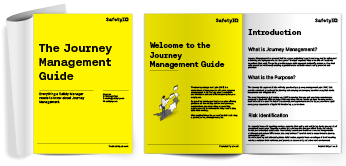
Drive In, Drive Out: The Ins and Outs of DIDO Jobs
Various job structures cater to the unique needs of industries and workers alike. One such arrangement that has gained traction, especially in remote areas, is the Drive In Drive Out (DIDO) job model. But what exactly does this entail?
What Is a Drive In Drive Out Job?
A Drive In Drive Out (DIDO) job is a type of employment where workers drive themselves to a remote worksite for a set period, then drive back home for their days off, eliminating the need for them to permanently relocate or fly to the job site.
DIDO jobs are prevalent in industries like mining , construction , and agriculture, especially in regions where the worksites are distant from major cities but still accessible by road. The typical routine of a DIDO worker involves:
- Commute : Workers drive to the site at the beginning of their roster, which could range from a few days to several weeks. The commute can vary from a couple of hours to an entire day, depending on the location of the site.
- On-site Accommodation : Once at the site, workers usually stay in provided accommodations, such as camps or lodges. These accommodations often have facilities like dining halls, recreational areas, and sometimes even gyms, ensuring workers have a comfortable stay.
- Work Schedule : Drive In Drive Out workers typically have long workdays, often 12 hours or more. The intensity and nature of the job depend on the industry, with some roles requiring physical labor, while others might be more administrative or supervisory.
- Days Off : After their roster ends, workers drive back home, where they get several days off to rest and spend time with their families before the cycle begins again.
The Drive In Drive Out model offers a balance, allowing workers to take on jobs in remote areas without uprooting their lives, while also providing industries with the skilled labor they need, even in distant locations.
FIFO and DIDO: Understanding the Differences
In industries that operate in remote locations , ensuring a steady supply of skilled workers can be a challenge. Two popular solutions to this challenge are the FIFO (Fly In Fly Out) and DIDO (Drive In Drive Out) models. While they share similarities in providing flexible work arrangements, they also have distinct differences.
What is FIFO (Fly In Fly Out)?
Fly In Fly Out (FIFO) is an employment model where workers are flown to the remote worksite for a set period and then flown back to their home city for their days off. This model eliminates the need for workers to relocate permanently to the vicinity of the worksite.
FIFO vs DIDO: A Comparison
Transportation
- FIFO : Workers are transported to and from the worksite by plane. This is especially common for extremely remote sites where driving is not feasible due to distance or lack of road infrastructure.
- DIDO : Workers drive themselves to the worksite and back home. This is suitable for sites that, while remote, are still accessible by road.
- FIFO : Predominantly used in the mining, oil, and gas industries , especially in areas that are very remote or challenging to access by road.
- DIDO : Common in mining, construction, and agriculture, especially in regions where the worksites are distant but still reachable by road.
Worker Experiences
- FIFO : Workers often face longer periods away from home, given the logistics and cost of flying. The accommodations are typically well-equipped camps with various amenities since workers stay for extended periods. The nature of FIFO can be more taxing due to the longer durations away from family and the potential for jet lag.
- DIDO : The commute can be long, but workers have the flexibility of driving and more control over their travel schedule. The periods on-site might be shorter compared to FIFO, allowing for more frequent home visits. However, the repeated long drives can be tiring.
While both FIFO and DIDO offer solutions to the challenges of staffing remote worksites , the choice between them depends on the specific needs of the industry, the location of the site, and the preferences of the workers.
What Does BIBO Mean in Australia?
"BIBO" stands for "Bus-In, Bus-Out." It's a term similar to FIFO (Fly-In, Fly-Out) and DIDO (Drive In Drive Out), but in the context of BIBO, workers are transported to and from remote worksites using buses rather than planes or personal vehicles.
This mode of transportation is often used for sites that are relatively accessible by road and where it's efficient to transport a larger group of workers together. BIBO is common in industries like mining or construction, especially when the worksite is at a distance that can be covered by a bus journey but is too close or inaccessible for flights.
What is a DIDO Roster?
A DIDO roster refers to the work schedule or arrangement for employees who work in remote locations and drive themselves to and from the worksite. The roster outlines the number of days or weeks an employee is expected to work (on-site) and the number of days or weeks they have off (at home).
For example, a common Drive In Drive Out roster might be "2 weeks on, 1 week off." This means that an employee would work at the remote site for two consecutive weeks and then have one week off at home. Another example could be "8 days on, 6 days off," where the worker spends 8 days at the worksite and then has 6 days off.
The specifics of the roster can vary based on the employer's needs, the nature of the job, and the industry. The goal of such rosters is to provide a balance between work and rest , especially given the challenges of working in remote locations.
How to improve DIDO Worker Safety
Understanding the risks.
Before we dive into the best approach to address safety concerns for DIDO workers, we need to understand which risks we are trying to mitigate.
- Driving-Related Accidents: Long hours on the road can lead to driver fatigue, distractions, and increased chances of accidents, which can be fatal or result in severe injuries.
- Fatigue Management: DIDO workers often endure extended shifts and irregular work schedules, making them susceptible to fatigue-related incidents both on the road and at work.
- Weather Hazards: Many DIDO jobs involve traveling through remote and challenging terrains, exposing workers to unpredictable weather conditions, such as heavy rain, snow, or extreme heat.
- Remote Locations: Workers may operate in remote areas with limited access to medical facilities or emergency services, adding complexity to response times in case of emergencies.
How to Mitigate these Risks
Journey Management is a comprehensive approach aimed at mitigating the risks associated with travelling to and from work, specifically tailored to the unique needs of DIDO workers.
Here's how it works:
Route Planning and Risk Assessment:
Before embarking on a journey, journey management involves thoroughly planning the route, taking into account factors like road conditions, weather, and fatigue-prone areas. A risk assessment is conducted to identify potential hazards and develop strategies to mitigate them.
Scheduled Breaks:
Journey management emphasizes the importance of scheduled breaks to combat driver fatigue. Implementing strict policies regarding rest intervals can help ensure that workers are well-rested during their journeys.
Communication Protocols:
DIDO workers should have reliable means of communication with their employers or colleagues. Satellite phones, two-way radios, or mobile apps can be used to stay connected, particularly in remote areas with limited cell coverage.
Emergency Response Plans:
Having a well-defined emergency response plan is critical. It should include procedures for accidents, medical emergencies, and breakdowns, as well as access to emergency services and evacuation routes.
Training and Education:
Workers should receive comprehensive training on journey management principles, safe driving practices, and how to respond to emergencies. Ongoing education and awareness campaigns can reinforce these practices.
Vehicle Maintenance:
Regular maintenance and inspections of vehicles are essential to prevent breakdowns or accidents due to mechanical failures.
Driver Monitoring:
Implement technologies like GPS tracking and telematics to monitor driver behavior, ensure adherence to safety protocols, and provide real-time support if needed.
Incident Reporting:
Encourage a culture of incident reporting, where workers feel comfortable reporting safety concerns, near misses, or accidents. This information can be invaluable for continuous improvement.
Ensuring the safety of DIDO workers is not just a legal obligation but a moral responsibility. Journey management is a proactive approach that can significantly reduce the risks associated with driving to and from remote work locations. By prioritizing route planning, fatigue management, communication, and emergency response, organizations can create a safer work environment for their DIDO workers. Implementing these practices not only protects the workforce but also enhances productivity and reputation, making it a win-win for everyone involved.
If you'd like to learn more about Journey Management, we have created a comprehensive guide:
We cover a range of topics in our articles - view all blogs .
Get more actionable insights in your inbox!
Free guide: how to future proof your safety program.

Copyright © 2024 SafetyIQ Pty Ltd. All Rights Reserved.
Consent Preferences



What’s the Difference between FIFO vs. DIDO? Key Differences Explained
In the world of employment, work arrangements have evolved to cater to the changing needs and demands of employees and businesses alike. Two popular work arrangements that have gained prominence in recent years are Fly-In Fly-Out (FIFO) and Drive-In Drive-Out (DIDO). These arrangements offer unique advantages and considerations for those seeking a flexible work-life balance. In this article, we delve into the key differences between FIFO and DIDO work arrangements and examine the factors to consider before choosing the right option for you.
Understanding FIFO and DIDO Work Arrangements
Fly-In Fly-Out (FIFO) and Drive-In Drive-Out (DIDO) work arrangements are commonly used in industries such as mining, oil, and gas, where employees work in challenging and remote locations. While both arrangements have their advantages and drawbacks, they provide unique opportunities and challenges for workers.
Pros and Cons of Fly-In Fly-Out (FIFO) Work
FIFO work refers to a work arrangement where employees are flown to a remote worksite and provided accommodation for a set period before returning home. This arrangement offers several advantages that make it appealing to many individuals.
One of the main benefits of FIFO work is the opportunity to earn higher wages. Remote worksites often offer higher salaries and additional benefits to compensate for the challenges and isolation that come with the job. This financial incentive can be a significant motivator for individuals seeking to improve their financial situation.
Another advantage of FIFO work is the chance to work in unique environments. Remote locations often provide employees with the opportunity to experience breathtaking landscapes and natural wonders that are not easily accessible to the general public. This can create a sense of adventure and excitement in the workplace, making the job more fulfilling for those who enjoy exploring new places.
However, despite these advantages, FIFO work also comes with its share of drawbacks that individuals must consider before committing to this arrangement.
One of the major disadvantages of FIFO work is the strain it can put on personal relationships and family life. Being away from loved ones for extended periods can cause emotional stress and strain. The absence of a partner or parent can be challenging for families, especially during important milestones and events. Maintaining a healthy work-life balance can be particularly difficult for FIFO workers, as they often miss out on family gatherings and quality time with their loved ones.
Moreover, the isolation and limited social connections in remote locations can impact an individual’s mental well-being. The lack of a support system and the distance from friends and family can lead to feelings of loneliness and homesickness. It is essential for FIFO workers to develop coping mechanisms and find ways to stay connected with their support networks to maintain their mental health.
The irregular working hours and routine disruptions can also lead to sleep disturbances and a poor work-life balance. Shift work and long working hours can disrupt natural sleep patterns, leading to fatigue and decreased productivity. Maintaining a healthy lifestyle and managing stress becomes crucial for FIFO workers to ensure their well-being.
The Benefits and Drawbacks of Drive-In Drive-Out (DIDO) Work
Drive-In Drive-Out (DIDO) work, on the other hand, involves commuting to and from a worksite on a daily basis. This arrangement is commonly seen in industries where remote locations are not a barrier, allowing employees to live closer to their worksites.
DIDO work offers unique advantages that make it an appealing option for many individuals.
One of the main benefits of DIDO work is the ability to maintain regular contact with family and friends. Unlike FIFO workers who spend extended periods away from home, DIDO workers have the opportunity to return to their families and homes every day. This regular contact can help strengthen personal relationships and provide a sense of stability and routine in their personal lives.
Additionally, the convenience of sleeping in one’s own home is a significant advantage of DIDO work. Unlike FIFO workers who live in temporary accommodations, DIDO workers can enjoy the comfort and familiarity of their own beds. This can contribute to better sleep quality and overall well-being.
However, despite these benefits, DIDO work also has its drawbacks that individuals must consider.
The daily commute can be time-consuming and can have an impact on work-life balance. Spending hours on the road every day can be physically and mentally exhausting, leaving less time for personal activities and relaxation. The long commute can also add stress to an individual’s daily routine, especially if they encounter traffic congestion or road accidents.
Additionally, fuel and vehicle maintenance costs can be significant for DIDO workers, especially if the worksite is far from residential areas. The expenses associated with daily commuting can eat into the financial benefits of the job, and individuals must carefully consider these costs before committing to a DIDO work arrangement.
In conclusion, both FIFO and DIDO work arrangements offer unique opportunities and challenges for employees in remote industries. It is essential for individuals to carefully weigh the pros and cons of each arrangement and consider their personal circumstances before making a decision. Ultimately, finding a work arrangement that aligns with one’s values, goals, and personal circumstances is crucial for long-term job satisfaction and well-being.
Is Fly-In or Drive-In Work Right for You?
Factors to consider before choosing fifo or dido.
Before deciding between FIFO and DIDO work arrangements, it is essential to consider various factors that play a significant role in shaping one’s work-life balance.
One of the most crucial factors to assess is your personal circumstances. Take a moment to reflect on your family commitments, relationships, and the importance of a stable home life. Consider whether the demands of FIFO work, such as being away from home for extended periods, will align with your personal responsibilities. It’s important to strike a balance between your professional aspirations and your personal life.
Financial considerations also come into play when choosing between FIFO and DIDO work arrangements. Take the time to examine your financial situation and evaluate whether the potential higher earning potential of FIFO work justifies the associated costs. These costs may include accommodation expenses during work rotations and travel costs. Understanding the financial implications will help you make an informed decision.
Another crucial aspect to reflect on is your desired work-life balance. Each work arrangement offers different benefits and challenges. Think about what matters most to you. Are you willing to sacrifice regular contact with family and friends for the benefits of FIFO work, such as higher earnings or exposure to unique environments? Or do you prioritize daily interactions and the convenience of returning home at the end of each day, as offered by DIDO work?
Evaluating the Financial Aspects of FIFO and DIDO Work
Financial considerations play a significant role in determining the feasibility and attractiveness of FIFO and DIDO work arrangements.
When evaluating the financial aspects of FIFO work, it’s important to consider the potential for higher wages compared to traditional work arrangements. However, be mindful of the additional costs associated with living away from home. These costs may include accommodation, meals, and transportation expenses during work rotations. Understanding the financial implications will help you make an informed decision.
For those considering DIDO work, it is essential to evaluate the costs associated with daily commuting. This includes fuel expenses, vehicle maintenance, and toll fees, if applicable. While the daily commute may seem convenient, keep in mind that it can be time-consuming and may impact your work-life balance. Weighing the financial aspects will help you determine which option is more financially viable for you.
In conclusion, FIFO and DIDO work arrangements offer distinct advantages and considerations for individuals seeking flexible work-life balances. While FIFO work can provide unique opportunities for higher earnings and exposure to unique environments, it also poses challenges related to family life and personal well-being. On the other hand, DIDO work offers the comfort of returning home at the end of each day and maintaining regular contact with loved ones, but it may result in daily commuting challenges.
Ultimately, the choice between FIFO and DIDO work arrangements should be based on careful consideration of personal circumstances, financial considerations, and desired work-life balance. By weighing the pros and cons of each arrangement, individuals can make informed decisions that align with their priorities and lifestyle preferences.
Remember, there is no one-size-fits-all answer. It’s important to evaluate your own needs and priorities before making a decision. Take the time to reflect on what matters most to you and consider seeking advice from professionals or individuals who have experience with FIFO or DIDO work arrangements. With careful consideration, you can choose the work arrangement that best suits your unique circumstances and goals.

- TAXATION AND COMPLIANCE
- Effective tax planning
- Know your cash flow
- Superannuation
- Structuring your business
- Strategy and prevention
- Managing your business
- Growing your business
- Retirement planning
- SUPER & SMSF
- QBCC SPECIALIST ACCOUNTANTS
- FIX UP PACKAGE
- OVERHAUL PACKAGE
- ADVICE PACKAGE
- ESSENTIALS PACKAGE
- EXTRAS PACKAGE
- PREMIUM PACKAGE
- Why choose us
- Testimonials
- Business Advice – Starting
- Business Advice – Growing
- Business Advice – Exiting
- Compliance & Record Keeping
- Wealth Creation & Strategy
- Local and Current Issues
- Items of Interest
Claiming travel expenses for FIFO workers
- May 11, 2015
Today many workers travel to remote areas to work for several weeks at a time and return home for a week or two. Because a lot of these places of employment are in remote areas and costly to get to, many expect that they should be able to claim their costs of getting to work as a tax deduction.
Claiming travel expenses for Fly-In-Fly-Out and Drive-In-Drive-Out workers is often confusing. We always hear ‘my work mate is claiming all his travel costs, why can’t I?’ To dispel the myths we have summed up below exactly what you can and can’t claim when it comes to travel expenses for FIFO and DIDO workers.
You cannot claim your travel expenses (this includes motor vehicle expenses, airfares, taxis and other public transport) for travelling between your home and the place of departure as nominated by your employer under FIFO arrangements.
You can claim deductions for your car expenses from home to work if you had to carry bulky tools and equipment that you are required to use at work, as long as there is no secure area provided to leave them on site. A trip from your workplace to home carrying bulky equipment so that you can do work at home would not be deductible because you only take them home as a matter of convenience not necessity.
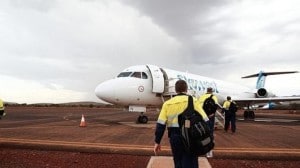
Comments are closed.
Latest Blogs
- Tax Changes and Reminders
- Changes in Reporting Requirements for Not-for-Profits
- Google Search is about to have a game-changing update. Is your business ready?
- How to get your business ready to sell
- Rental Property deductions

I rely on MJJ Accounting to be there when I can‘t. As an expatriate, managing affairs from overseas is difficult. However Mel and the team are like an extension of us in AUS and I feel like we never miss a date, an issue or a reporting. MJJ accounting brings one peace of mind.
The team at MJJ Accounting have been a lifesaver for our small business. Melissa always goes the extra mile to ensure we understand our options and is prompt in replying to our questions. I know our business is in good hands now!

We were looking to move our accounting in a more technological direction and have found the team at MJJ to be spot on. Melanie has a genuine interest in our business needs and the direction we want to take the company. We have found Sam and the team to be very helpful and look forward to continued support.

Could not speak more highly of the support we have received over the years from the team at MJJ. Special shout out to Renee who has been most supportive, professional, knowledgable and pro-active in taking care of our business and personal accounting needs. Thanks so much!

We would highly recommend MJJ accountants. Melanie has always gone above and beyond for us. Her work is of an extremely high standard - she provides excellent advice, is diligent, efficient, helpful and full of integrity. Thank you Melanie for your amazing work.

Tax time checklists
- International edition
- Australia edition
- Europe edition
How Dido did it
As we drive through France in a plush, two-deck tour bus, Dido Armstrong - currently the world's best-selling female music star - decides to serenade her band in the bus behind. Only a few hours earlier, they'd been onstage in Paris, performing songs from her album No Angel, which had gone to number one in the French charts that very day. The audience had loved every minute, including a young Englishman doing an irony-free impression of Ali G by yelling, 'You're fit, Dido!' between each song. But now the singer is doing some bellowing of her own, grabbing the handset of the CB radio connecting the two buses and singing a deliberately out-of-tune version of 'I Just Called to Say I Love You'. Her manager looks on with appalled amusement. 'I said I could sing my own songs,' laughs Dido. 'I never said I could sing anyone else's.'
Towards the end of last year, 18 months after No Angel had been released in America, sales finally passed the 1m mark, which means she's one of the few British acts to enjoy success in the US charts. Then after a low-key release over here in November, it sold an impressive 100,000 copies by Christmas. So she and her solicitor boyfriend, Bob, decided to take their first holiday in two years. Dido was pleased with the way her career was going: 'I thought I'd managed to sell loads of records without anybody knowing who I was.' But on the beach, she saw someone flicking through a copy of the Express and noticed an unexpectedly familiar face splashed across the front page. Her own. Embarrassed, she went to the shop and bought up every copy to stop anyone else reading them. 'I just thought it was so odd. That you could end up on the front page of a newspaper for doing nothing.'
It was the first inkling she had that everything had changed. The headlines, of course, were due to Eminem, who had sampled the first verse of her track 'Thank You' - a sugar-sweet love song originally written for Bob - and made it the centrepiece of his tale of twisted obsession, 'Stan'. With the British media busy whipping themselves into a frenzy of outrage over the rapper, Dido's contribution to the hit made an irresistible tale of cool British beauty meets controversial American beast. But records don't sell solely because of a sample on one song. 'Stan' merely speeded up the process, and suddenly she was shifting albums at an extraordinary rate: 7m to date, with no signs of the impetus slowing. The album has been number one in 13 countries so far, with more to come as its release rolls out across Europe.
Next month, Dido - having already notched up 100 dates in the US over the past two years - will be touring America again, this time headlining stadium venues that hold 15,000 to 20,000 people. But when I catch up with her in Europe, she's playing fairly intimate venues in countries she hasn't visited before, sleeping on the tour bus due to an ear infection which prevents her flying. After travelling through the night from Paris, the bus stops at Biarritz to allow the driver to sleep before moving on to Madrid, and Dido checks into a hotel for a rare day off: a long walk is followed by a little light shopping. Later, sitting in a vast suite overlooking the sea, she says she is still coming to terms with what it all means, this success. Although she will eventually be very rich indeed, it takes some time for royalties to roll in. And so far, her life has barely changed: 'My rooms are getting bigger and bigger. But otherwise, it's just the same old life. We're still touring, so you don't really get a sense of reality. I've been moving for the past two-and-a-half years, and the longest I've had in one place is two weeks.'
Dido has loved music since she first picked up the recorder at school. An intense, chubby child, at the age of six she once screamed at her mum, who had packed the instrument away for a family trip, 'I'll die if I don't have my recorder now.' She took weekend music classes at the Guildhall, learned violin and piano, and practised for hours on end. Yet oddly, it was her older brother Rollo - who cannot play an instrument - who first found success in the music industry. He got into dance music at the end of the 80s, when the emerging computer technology made ideas more important than ability in terms of hit records. Working initially from a tiny home studio, he produced a string of one-off dance hits under different names, set up the successful independent label Cheeky, then proved that dance groups could sell albums by the million with his ground-breaking group Faithless.
Dido was at the studio when her brother was working, helping out on songs and singing the demos before he got the real artists involved. When he told her he was planning to put a song they'd written together on the first Faithless album, she had a perfect reason to be there when it was recorded. However, she concedes, 'I definitely hung out more than was entirely necessary,' sometimes driving an hour across London just to 'pop in' to the studio. Once there she'd sit quietly, watching and learning, making tea and making friends with the others, waiting for any opportunities. She ended up singing on a few tracks and touring for a while with Faithless, but when it came to building a career of her own, she sums up her brother's attitude as: 'If you're going to do this, please don't do it on my turf.'
Rollo, meanwhile, cheerfully admits he told his sister not to give up her day job at a literary agency. 'I'd been really lucky and my feeling was that it doesn't strike the same place twice. And maybe deep down I didn't want the competition. But she was absolutely determined, and when my sister's determined, that's it. It didn't matter what I said. She just went off on her own and found people to work with.'
Rollo and Dido had an unusual childhood, growing up in Islington in a house full of books with no television and no visitors. Their father, William, worked in publishing; their mother, Claire, writes poetry. Both children clearly love her and are fiercely protective of her, but her eccentricities often made their young lives embarrassing and difficult.
They hated being different. Their names. Their odd clothes. Their strange packed lunches. 'Everyone would be asking where the funny smell was coming from and you'd open it and it would be last night's rat- atouille on some sort of disintegrating rye bread. Which is not what you want when everyone else has got nice white-bread sandwiches and a Penguin. We've always strived to be... normal.
'When we were younger,' Dido says, 'it was a strange old world, but now we look back and wonder if we'd be doing what we do if Mum hadn't have been that way. Now when she gets on her high horse about something, I might still think it's completely wrong, but I also feel, "Good on you, with your strange logic. At least you think something." Obviously as a kid, you can't bear the fact that your parents might actually be individuals and have troubles. They were young - I realise that now that I'm heading towards 30 at full speed. My mum had Rollo by then and was just about to have me. And I'm not ready!'
Dido was named after the Queen of Carthage in Virgil's Aeneid. At home, at school, to her family and friends, she has always been Dido, just as her brother has always been Rollo. On her birth certificate, however, her name is Florian Cloud De Bounevialle Armstrong. The name Rollo was christened with is apparently equally fantastic, but all his sister will reveal is that his first name is Roland.
'To be called one thing and christened another is actually very confusing and annoying,' she says. 'It's one of the most irritating things that my parents did to me. I'm still irritated by it. Florian is a German man's name. That's just mean. To give your child a whole lot of odd names. They were all so embarrassing.' As for the Dido part, she likes it now (although it still finds ways to annoy her: in much of Europe, they pronounce it Dee-doh). But growing up, she hated it. 'I thought it was cruel to call me Dido and then expect me to just deal with it.' She preferred Chloe, and when playing with one friend on a nearby housing estate, she called herself Claire. But then her mum turned up asking for Dido, and all the local kids fell about laughing. She never went back.
When she was younger, Dido remembers dinner parties, friends coming round. And then one day, people stopped coming and outsiders weren't allowed. She's never asked why. 'There are a lot of questions I've got to ask my mum when I get round to it,' she says, vaguely. 'I think she just went off people. She didn't like them in our life, judging her life.'
Having no television, Dido was often left out of conversations at school, and she is still baffled by references her friends make to children's programmes such as The Magic Roundabout . It hardly seems worth sitting through piles of old reruns at this point in her life, just to catch up. It has also left her with a surprising lack of general knowledge, the kind of random facts you tend to pick up by osmosis from the screen. Instead, they read a lot - Dido recalls ploughing through War and Peace at the age of nine (more, she admits, to prove a point to Rollo and her dad, who insisted she wouldn't finish it, than out of any real enjoyment). A close-knit family, they lived, she says, in a kind of fantasy world - something she needs to watch now, in the enclosed fantasy world of the music industry.
Her parents always treated their children more as friends. When Dido got into music, her mother enthusiastically plunged into it too, taking her to concerts, learning about music with her, and eventually taking singing lessons herself: 'She has a beautiful voice.' Later, a young Dido would go clubbing in the West End and to reggae nights in Brixton without any parental interference. She remembers a night in her early teens when she arrived home drunk at 5am, and her mum - who had been up writing poetry - simply ran her a bath. 'It was more of a random set of rules,' Dido muses. She could disappear for days without a question being asked, but then she'd come home and there'd be a row about her not wearing slippers. 'Nothing was taken for granted in my house. Nothing was done in a conventional manner.'
When she was 15 (or maybe 16 - she and her mum's memories differ on this), Dido was asked to leave home. She's hazy as to why. She says she was 'probably a bit unbearable by that stage', and that 'it was one of those mother/daughter arguments that escalated'. She goes on to explain: 'By the time I was a teenager, we had quite an intense relationship and it was just hard for us to live in the same house as each other. I didn't want to go; I was absolutely mortified to be thrown out. But I was also very stubborn. So when it got to the stage where I probably could go back, I didn't.'
She lived with her best friend's family, returning home for a couple of months just before her A levels when her parents realised how little work she'd been doing. For the first time, she even had a curfew. 'I'd been out clubbing from the age of 12, then suddenly I had to be home at 10.30pm - which was the most inconvenient time you could imagine,' she laughs. 'I'd only got to the pub by 10.'
Angry at her lack of self-discipline, her parents refused to pay for her to go to university as Rollo had. 'I sort of see their point, in a way,' Dido now says, wistfully. 'I wouldn't have done any work at university either. I just smoked myself silly through school, went out every weekend partying.' On the day of her last A-level exam, she applied for a job as a waitress, starting work immediately and moving into a flat with her brother. 'I had to move pretty fast. I had no money.'
Shirley Conran, one of her dad's authors, gave her the best advice: 'Go to secretarial college. It'll take three months of your life, and then you'll always be able to earn money.' Afterwards, Dido worked as a waitress at night and temped during the day, aiming to pay her own way through university within a couple of years. 'But then I got side-tracked. I just enjoyed making money and having a job too much.'
What she missed out on, she muses, was the time to decide what she really wanted to do with her life. Which is perhaps why she ended up working at the literary agency by day, studying for a law degree at night and hanging out at the studio all hours in between. 'I was trying everything at once.' She still doesn't like having too many days off - 'It gives you time to think,' she says. Even on their holiday, she made Bob lug a keyboard along so she could write a song. 'I can't ever remember a time in my life when I haven't had just so much shit hanging over me to do, and the guilt that I've got to keep just doing more and more.'
The panic attacks started after her last gig with Faithless in Dublin in 1995. Towards the end of their set, Dido would go offstage while the other singer in the group did her solo, and on that particular night the road manager told her they'd have to wrap up quickly because six people in the audience had been stabbed. She then had to go back on to sing the last song, knowing what had happened. It wasn't the best way to say goodbye. That night, in her hotel room, she thought she was having a heart attack.
She had enough money saved to last her a year, so she spent that time writing songs, finding collaborators, recording demos and making contacts. In October 1996, just before the money ran out, she signed a publishing deal for her songs with Warner-Chappell. The company took her out for dinner, and she came home with a cheque - then sat in her flat for over a week, heart pounding, afraid to go outside.
'Music had always been my personal thing,' she explains. 'No one invaded it, no one bothered me, it was absolutely mine. It was my escape. Whenever anything was bugging me, I'd just go and play my music and it made me happy. And there was something about them giving me money for it that, to me, symbolised it being taken away. I felt like I no longer had the thing that made my life worth living.'
She pulled herself together by writing a song ('Slide', which appears on the album). But the attacks became a regular occurrence. 'It went on for a long time, right through till I started touring. So it was quite a challenge at first to get onstage.' Eventually she realised that she had to make changes, stop driving herself so hard. And although she sometimes feels one closing in, she hasn't had an attack now for two years. 'In a way, it shaped my whole career, because I decided only ever to put people around me who I trusted and liked.'
By the time her brother began to concede she might have some talent and offered her a deal with Cheeky, other record labels were interested, too. But his was the only deal that didn't make her panic. Rollo couldn't offer much money, but he did give her complete artistic freedom, the chance to make the record she wanted to make. 'I jumped at the chance to go back. The music industry is a pretty hostile place, and I wasn't having a good time.' Although she agreed to license her album through Arista in America after head man Clive Davies showed a personal interest, she ended up signing to Cheeky and working mainly with Rollo and old friends from the Faithless family.
It proved a wise move. Rollo, she says, has always been her harshest critic, and it was he who added the darker, more poetic edges to her lyrics at a time when her life was starting to fall into place and she was finding it hard to write songs which were anything other than blissfully happy. 'We haven't always liked each other,' she admits, 'but there's this real equality now, a mutual respect. I do my thing, he does his, but we can come together and do something together which is worthwhile and good. That's an amazing thing to share with a sibling.'
But just as the album was due to come out in 1999, Rollo decided to sell Cheeky to BMG, and put his release schedule on hold for over a year while the deal was negotiated. Arista proceeded with the release as plan-ned, and so Dido had little option but to go to America, doing all the travelling, play- ing, hand-shaking and sheer hard slog that British acts usually find difficult or too demeaning. 'The thing was, we sold more records every single week. I was tired and wanted to go home, but my manager would say, "Yes, but last week you sold 3,978 and this week you're selling 3,979!" It was that slow. But it never went down once. There was always this sort of hope - this assumption - that things would be huge.'
Slowly, the breakthroughs happened. Her songs began appearing on soundtracks, and 'Here With Me' became the theme music to the cult sci-fi show Roswell High . Then there was 'Stan', and suddenly she was singing on Saturday Night Live alongside Eminem and playing to '25,000 sweaty teenagers' as a surprise guest on his stadium dates. She says the rapper 'was always sweet and charming and friendly', but she's keen to move on from the subject. Last summer, she was pleading with Rollo to get his deal sorted so her album could come out in the UK before 'Stan', but in the end they came out together and their success was linked. She chose not to sing with Eminem at the Brits this year as a result. 'I'll only sing it when I want to sing it,' she shrugs. 'And I hate that establishment shit.' It was a sentiment Eminem understood, and he dropped 'Stan' from his Brits set.
In August, after the US tour, there will finally be some time off. Dido doesn't want to go on holiday. She just wants to go home. 'I have no desire to travel anywhere. I just want to sleep for three weeks and do nothing. I'd like to do a bit of recording, though. And I want to see my mates and catch up.'
After years of moving from one tiny flat to another in London, she plans to buy a house - the first thing she's ever owned - and get married. She and Bob have been together for six years now, their relationship surviving her frequent absences. 'There's no way I would have put up with what he's put up with, but he's got a great life of his own, great mates. We're very individual people, and we do our own thing. But he's definitely my favourite person in the world to be with.'
When they first talked about it, they'd planned a big wedding with all their friends. But as time goes on and media interest in her builds, this may get harder to do. So perhaps now it will happen sooner, and be somewhat smaller. Hello! and OK! called as soon as the news of their engagement got into the papers, and were told in no uncertain terms to go away. Now they both wish they'd found out how much money was on offer first: they wouldn't have taken it, but it would have been interesting to find out what they were worth.
Next year she'll make a new album, then there'll. be a world tour taking up 2003, after which, she says, 'I'll keep on going till it all feels wrong.' Eventually she'd like to start a label of her own and write songs for the artists she signs. At some point she'd like children, dogs. For now, there are shows to do.
It's about 2am when we say goodbye in Madrid, with Dido climbing on to the bus for yet another all-night drive before her show in Barcelona. Bob is flying out for the weekend, but otherwise it's business as usual. 'This is my life now, not just some funny little thing I do,' she says, as if it's a sudden realisation. 'I couldn't just walk away from it - I employ so many people. That's a weird thing. But I do feel this is the right life, that I'm not stuck in the wrong one.'
- Life and style
- The Observer
Most viewed
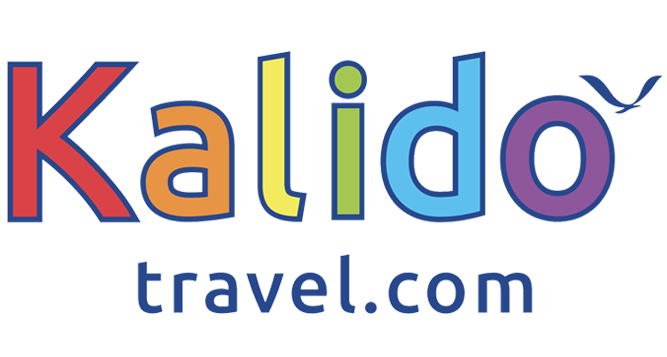
- FIND US AT AIRPORT
- TRAVEL TIPS

- Reserve a Transfer
- Reserve a Tour
if you cannot find your destination on our list, please contact us
Cancun and the riviera maya tours.
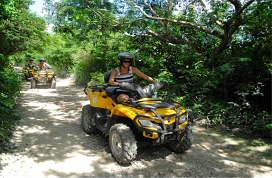
Welcome to the official website of Cancun and the Riviera Maya by Kalido Travel
Plan your trip with us, because we can offer you the best advice for what you desire. Have an unforgettable vacation with the help of our team. Our team offers an amazing service for private airport to hotel transfers.
We also transfers between hotel and hotel and to other locations if needed.
We have also compiled a huge variety of tours, activities and attractions in Cancun, Playa del Carmen, Riviera Maya and trips to Isla Mujeres. From relaxing to fun and adventure tours, we have it all.
We are always here to help.
Trust us, we are locals!
Why reserve with us
- Amazing prices for transfers & tours.
- All prices include taxes.
- Our clients are the most important.
- 100% Private transfers.
- Prices per VEHICLE, not per person.
- No annoying waiting time.
- Arrival flight tracking.
- Airport meet & greet.
- Your purchase is secure.
Prices of Transfers
These prices are per vehicle and not per person (we have the option to pay in usd or mxn) Please make sure you enter the correct amount of people in the booking box as this is important as we can only take the amount of people we have on our schedule so we have no problems with the airport / traffic authourities
IF YOUR DESTINATION IS NOT LISTED CONTACT US FOR QUOTATION....

FAVORITE DESTINATIONS

our added value services

Call Us: +52 998 221 8745 (Transfers)
Call us: +52 998 155 6240 (tours).
Email us: [email protected]
QUICK LINKS
- CANCELLATION POLICIES
- PRIVACY POLICY
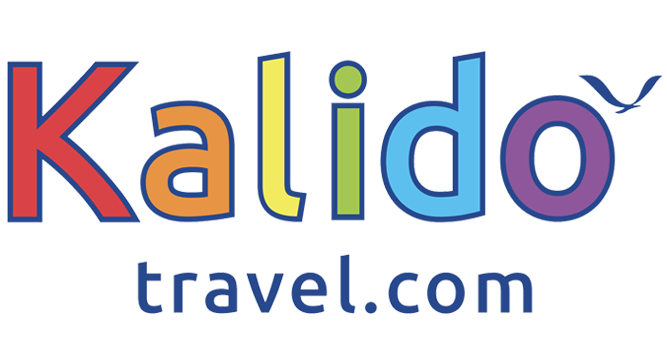
Phone: +52 998 221 8745 (Transfers)
Phone: +52 998 155 6240 (Tours)
Mail: [email protected]
Web: kalidotravel.com

We are sorry to say but for this date we are totally full...

Still on My Mind
Deluxe edition.
Includes a bonus disc of acoustic tracks and the new single 'Just Because'
ORDER THE CD FROM
OR LISTEN AT
TRACKLISTING
- Give You Up
- Hell After This
- You Don't Need a God
- Take You Home
- Some Kind of Love
- Still On My Mind
- Have To Stay
- Just Because
- This Is Love
- What Am I Doing Here
- Hurricanes (Live Acoustic)
- Thank You (Live Acoustic)
- White Flag (Live Acoustic)
- Give You Up (Mark Knight Remix)
- Take You Home (Undercatt Remix)
There are currently no live dates scheduled.
~ Today's Topics ~
© Copyright 2023 Eye on Sun Valley
Security Alert May 17, 2024
Worldwide caution.
- Travel Advisories |
- Contact Us |
- MyTravelGov |
Find U.S. Embassies & Consulates
Travel.state.gov, congressional liaison, special issuance agency, u.s. passports, international travel, intercountry adoption, international parental child abduction, records and authentications, popular links, travel advisories, mytravelgov, stay connected, legal resources, legal information, info for u.s. law enforcement, replace or certify documents.
Share this page:
Russia Travel Advisory
Travel advisory june 27, 2024, russia - level 4: do not travel.
Reissued after periodic review with minor edits.
Do not travel to Russia due to the consequences of the full-scale invasion of Ukraine by Russian military forces. U.S. citizens may face harassment or detention by Russian security officials, arbitrary enforcement of local laws, limited flights into and out of Russia, and the possibility of terrorism. The U.S. Embassy has limited ability to assist U.S. citizens in Russia. The Department has determined that there is a continued risk of wrongful detention of U.S. nationals by Russian authorities. U.S. citizens residing or traveling in Russia should leave immediately.
The U.S. government has limited ability to help U.S. citizens in Russia, especially outside of Moscow. The U.S. Embassy is operating with reduced staffing, and the Russian government has restricted travel for embassy personnel. Furthermore, all U.S. consulates in Russia have suspended operations, including consular services.
There have been reports of drone attacks and explosions near the border with Ukraine as well as in Moscow, Kazan, and St. Petersburg. In an emergency, you should follow instructions from local authorities and seek shelter.
Russia may refuse to recognize your U.S. citizenship if you are a dual U.S.-Russian citizen or have a claim to Russian citizenship. Russia has denied consular officers visits to detained dual U.S.-Russian citizens. The Russian government has forced citizens with dual nationality to join the Russian military and prevented them from leaving the country. In 2022, the Russian government mobilized citizens for its invasion of Ukraine. Military conscription continues.
In Russia, the rights to peaceful assembly and free speech are not always protected. U.S. citizens should avoid protests and taking photos of security staff at these events. Russian authorities have arrested U.S. citizens who joined protests. Moreover, there are many reports of Russians being detained for social media posts.
U.S. citizens should know that U.S. credit and debit cards no longer work in Russia. Due to sanctions, sending electronic money transfers from the U.S. to Russia is nearly impossible.
Commercial flight options are minimal and are often unavailable on short notice. If you wish to depart Russia, you should make independent arrangements. The U.S. Embassy has limited ability to assist U.S. citizens in leaving the country, and transportation options may suddenly become even more restricted.
Click here for Information for U.S. Citizens Seeking to Depart Russia.
U.S. Embassy staff generally are not allowed to fly on Russian airlines due to safety concerns. Recently, the FAA downgraded Russia's air safety rating from Category 1 to Category 2. Additionally, the FAA banned U.S. flights in some Russian areas, including the Moscow Flight Information Region (FIR), the Samara FIR (UWWW), and the Rostov-na-Donu (URRV) FIR within 160NM of the boundaries of the Dnipro (UKDV) Flight Information Regions. Check the FAA's Prohibitions, Restrictions, and Notices for more information.
Country Summary:
Russian officials have interrogated and threatened U.S. citizens without cause. This includes former and current U.S. government and military personnel and private U.S. citizens engaged in business. U.S. citizens may become victims of harassment, mistreatment, and extortion.
Russian authorities may not notify the U.S. Embassy about the detention of a U.S. citizen and may delay U.S. consular assistance. Russian security services also target foreign and international organizations they consider “undesirable.”
Russian security services have arrested U.S. citizens on false charges, denied them fair treatment, and convicted them without credible evidence. Furthermore, Russian authorities have opened questionable investigations against U.S. citizens engaged in religious activity. U.S. citizens should avoid travel to Russia.
Russia's invasion of Ukraine has destabilized security in southwestern Russia. In October 2022, the Russian government declared martial law in the following border areas with Ukraine: Bryansk, Kursk, Belgorod, Voronezh, Rostov, and Krasnodar. Under martial law, authorities can set curfews, seize property, and restrict movement. The Russian government may detain foreigners, forcibly relocate residents, and limit public gatherings. U.S. citizens should avoid all travel to these areas.
Russian authorities have questioned, detained, and arrested people for “acting against Russia's interests.” Local authorities have targeted people for posting on social media or supporting "anti-Russian" groups and punished individuals for criticizing the government or military. The Russian government's current "LGBT propaganda" law bans discussion of LGBTQI+ related topics. In November 2023, the Supreme Court labeled the so-called "international LGBT movement" as extremist. This decision effectively made it a crime to support the human rights of LGBTQI+ persons in Russia.
Terrorists continue to plan attacks in Russia. The March 2024 Crocus City Hall incident proved they can strike suddenly. Terrorists may target tourist areas, transport hubs, and markets. They may also target government buildings, hotels, clubs, restaurants, and places of worship. Parks, events, schools, and airports are also potential targets. U.S. government employees under Embassy (Chief of Mission) security responsibility are not permitted to travel to the North Caucasus, including Chechnya and Mt. Elbrus. U.S. citizens should avoid travel to those areas.
The international community does not recognize Russia’s annexation of Crimea and does not acknowledge Russia’s purported annexation of Donetsk, Luhansk, Kherson, and Zaporizhzhya. Russia staged its full-scale invasion of Ukraine, in part, from occupied Crimea and there is a heavy Russian military presence in these areas. There is intense fighting across these regions and Russian authorities there have abused both foreigners and locals. Authorities have specifically targeted individuals who are seen as challenging Russia’s authority.
The U.S. Embassy in Kyiv administers consular services to U.S. citizens in Crimea, Donetsk, Luhansk, Kherson, and Zaporizhzhya. However, the conflict limits the Embassy's ability to help U.S. citizens in these areas.
Read the country information page for additional information on travel to Russia.
If you decide to travel to Russia:
- Read the information on what the U.S. government can and cannot do to assist you in an emergency overseas .
- Consider the risks involved in having dual U.S.- Russian nationality.
- Have a contingency plan in place that does not rely on U.S. government help. Review the Traveler’s Checklist .
- Follow news for any important events and update your plans based on the new information.
- Ensure travel documents are valid and easily accessible.
- Visit our website for Travel to High-Risk Areas .
- Enroll in the Smart Traveler Enrollment Program (STEP). This will allow you to receive Alerts and make it easier to locate you in an emergency.
- Follow the Department of State on Facebook and Twitter .
- Review the Country Security Report for Russia.
- Visit the CDC page for the latest Travel Health Information related to your travel.
Travel Advisory Levels
Assistance for u.s. citizens, russian federation map, search for travel advisories, external link.
You are about to leave travel.state.gov for an external website that is not maintained by the U.S. Department of State.
Links to external websites are provided as a convenience and should not be construed as an endorsement by the U.S. Department of State of the views or products contained therein. If you wish to remain on travel.state.gov, click the "cancel" message.
You are about to visit:
2018 Primetime Emmy & James Beard Award Winner
R&K Insider
Join our newsletter to get exclusives on where our correspondents travel, what they eat, where they stay. Free to sign up.
A History of Moscow in 13 Dishes
Featured city guides.

IMAGES
COMMENTS
FIFO vs. DIDO: A Question of Travel Time, Distance, and More. The most obvious difference between FIFO and DIDO are the modes of travel listed in their nomenclature. These also determine the distance between the worker's point of origin and their work site, how much time is typically spent at home versus at work, and how much monetary ...
DIDO and Fatigue. Bus in Bus out (BIBO) BIBO stands for "Bus-In, Bus-Out." BIBO workers will be collected from the airport or a specific location and taken to the camp by bus. They will then be transported back by bus once their work shift is complete. Click here for a full list of mining industry acronyms, slang and other lingo you need to ...
FIFO vs. DIDO: A Question of Travel Time, Distance, and More. The most obvious difference between FIFO and DIDO are the modes of travel listed in their nomenclature. These also determine the distance between the worker's point of origin and their work site, how much time is typically spent at home versus at work, and how much monetary ...
DIDO jobs are prevalent in industries like mining, construction, and agriculture, especially in regions where the worksites are distant from major cities but still accessible by road.The typical routine of a DIDO worker involves: Commute: Workers drive to the site at the beginning of their roster, which could range from a few days to several weeks.. The commute can vary from a couple of hours ...
Fly-in fly-out is a method of employing people in remote areas by flying them temporarily to the work site instead of relocating employees and their families permanently. It is often abbreviated to FIFO when referring to employment status. This is common in large mining regions in Australia [1] [2] and Canada.. Similar to the fly-in fly-out roster are the DIDO (drive-in drive-out), BIBO (bus ...
BringFido is the world's leading pet travel site and lifestyle brand. Explore over 500,000 pet friendly places to stay, play, and eat with your dog. Our directory includes the best pet friendly hotels, vacation rentals, outdoor restaurants, dog parks, and much more.
Additionally, the convenience of sleeping in one's own home is a significant advantage of DIDO work. Unlike FIFO workers who live in temporary accommodations, DIDO workers can enjoy the comfort and familiarity of their own beds. This can contribute to better sleep quality and overall well-being. However, despite these benefits, DIDO work also ...
The Official website for Dido. New album 'Still On My Mind' is Out Now. Tour tickets for Didos first tour in 15 years are also available.
351 Followers, 6 Following, 95 Posts - See Instagram photos and videos from DİDO TRAVEL AGENCY (@didotravel)
To dispel the myths we have summed up below exactly what you can and can't claim when it comes to travel expenses for FIFO and DIDO workers. You cannot claim your travel expenses (this includes motor vehicle expenses, airfares, taxis and other public transport) for travelling between your home and the place of departure as nominated by your ...
DIDO Travel, El Trébol. 58 likes · 23 talking about this. Legajo N° 18878 Desconéctate De La Realidad, Sonríe Todo lo Que Puedas, Abre tu Corazón a...
2 Followers, 4 Following, 1 Posts - See Instagram photos and videos from Dido travel (@dido.travel)
Dido was born Florian Cloud de Bounevialle Armstrong, at St. Mary Abbot's Hospital in Kensington, on Christmas Day in 1971. [13] [14] [15] As she was born on Christmas Day, she also celebrates an "official birthday" on 25 June, following the example of Paddington Bear.[16] [17] Her mother, Clare (née Collins), is a poet of French ancestry, [14] [18] and her father, William O'Malley Armstrong ...
Dido (/ ˈ d aɪ d oʊ / DY-doh; Ancient Greek: Διδώ Greek pronunciation: [diː.dɔ̌ː], Latin pronunciation:), also known as Elissa (/ ə ˈ l ɪ s ə / ə-LISS-ə, Ἔλισσα), [1] was the legendary founder and first queen of the Phoenician city-state of Carthage (located in Tunisia), in 814 BC.In most accounts, she was the queen of the Phoenician city-state of Tyre (located in ...
As we drive through France in a plush, two-deck tour bus, Dido Armstrong - currently the world's best-selling female music star - decides to serenade her band in the bus behind. Only a few hours ...
Welcome to the official website of Cancun and the Riviera Maya by Kalido Travel. Plan your trip with us, because we can offer you the best advice for what you desire. Have an unforgettable vacation with the help of our team. Our team offers an amazing service for private airport to hotel transfers. We also transfers between hotel and hotel and ...
The Official website for Dido. New album 'Still On My Mind' is Out Now. Tour tickets for Didos first tour in 15 years are also available.
That's why The Spot will stage the Western premiere of "Dido of Idaho" Thursday, Nov. 30, through Saturday, Dec. 9. "I ran across the title when I was choosing the season and 'Idaho' jumped out at me," said Natalie Battistone, creative director of The Spot theater company. "The dialogue whips past the audience," she added.
Travel Advisory. June 27, 2024. Russia - Level 4: Do Not Travel. O D U T. Reissued after periodic review with minor edits. Do not travel to Russia due to the consequences of the full-scale invasion of Ukraine by Russian military forces. U.S. citizens may face harassment or detention by Russian security officials, arbitrary enforcement of local ...
Doctor Dido is a historical novel by the British writer F. L. Lucas.First published in 1938, it was his third novel (not including the novella The Wild Tulip, 1932).With much local and antiquarian detail, it tells the story of Samuel Plampin, Doctor of Divinity at Cambridge and Vicar of St Peter's Babraham, who in 1792 brings to the vicarage as his housekeeper a young Frenchwoman he finds in ...
1: Off-kilter genius at Delicatessen: Brain pâté with kefir butter and young radishes served mezze-style, and the caviar and tartare pizza. Head for Food City. You might think that calling Food City (Фуд Сити), an agriculture depot on the outskirts of Moscow, a "city" would be some kind of hyperbole. It is not.